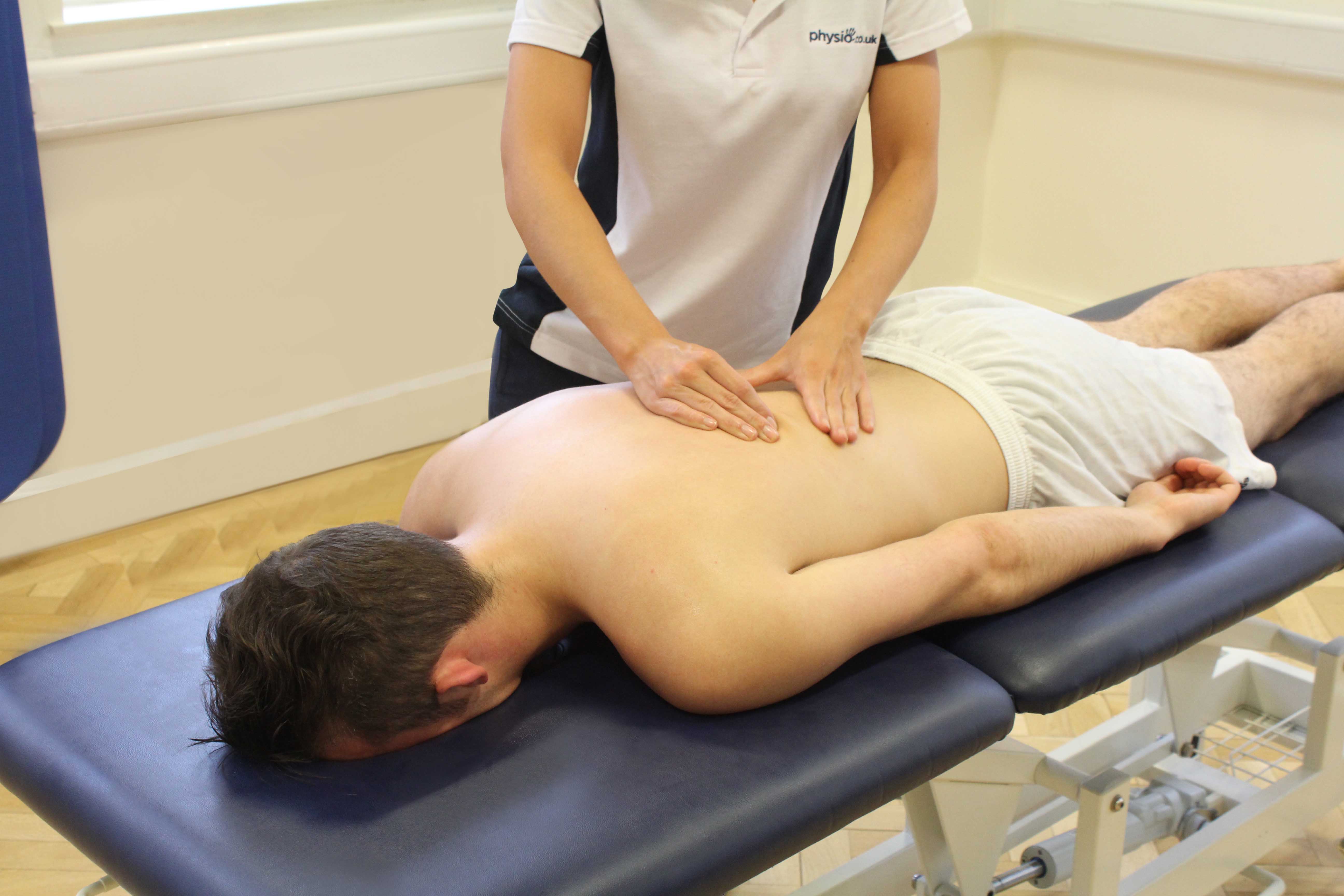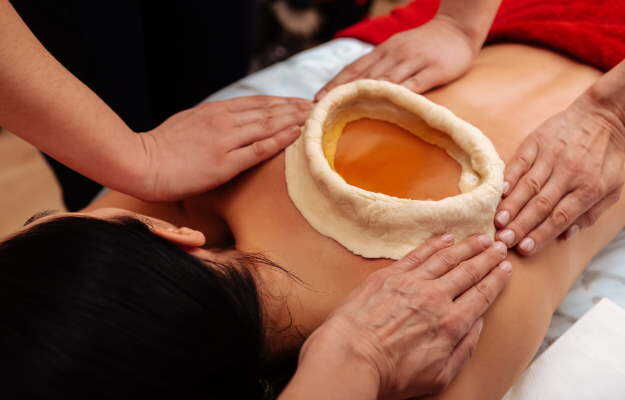

Tackle Lumbar Spondylosis Without Surgery
 Jun 8, 2024
Jun 8, 2024Lumbar spondylosis, a common condition among adults, refers to the degeneration of the spine in the lower back. Proper treatment is crucial for managing symptoms and improving quality of life. Additionally, lumbar spondylosis, also known as spinal osteoarthritis, occurs when the discs and joints in the lumbar spine degenerate over time. Moreover, it can be considered facet syndrome if it occurs in the zygapophysial joint. Therefore, understanding the causes, symptoms, and risk factors is essential for an effective treatment plan.

Symptoms of Lumbar Spondylosis:
- Lower Back Pain: The hallmark symptom is persistent pain in the lower back, which may worsen with movement or prolonged periods of sitting or standing.
- Stiffness: Individuals with lumbar spondylosis often experience stiffness in the lower back, reducing their flexibility and mobility.
- Radiating Pain: Additionally, the pain may radiate into the buttocks and thighs, and in severe cases, it can extend down the legs, resembling sciatica.
- Numbness and Tingling: Some may experience numbness or tingling sensations in the legs and feet due to nerve compression.
- Weakness: Weakness in the legs or difficulty walking can occur as the condition progresses and affects nerve function.
Other problems include:
1. Increased risk for fracture
2. Reduce mobility of the joints
3. Increased risk of cardiovascular disease

Causes of Lumbar Spondylosis:
Age-related Degeneration: The primary cause is the natural aging process, leading to wear and tear of the spinal discs and facet joints.
Genetic Factors: Additionally, genetic predisposition can contribute to an increased risk of developing lumbar spondylosis.
Lifestyle Factors: Moreover, sedentary lifestyles, lack of exercise, and obesity can accelerate the degenerative process of the spine.
Trauma and Injuries: Previous injuries or trauma to the lumbar spine can also contribute to the development of spondylosis.
Occupational Factors: Finally, jobs that involve heavy lifting, repetitive movements, or prolonged periods of sitting may increase the risk.
Diagnosis and Evaluation:
Clinical Examination: Firstly, a thorough examination by a healthcare professional is necessary to assess symptoms, range of motion, and neurological function.
Imaging Studies: Additionally, X-rays, MRI, and CT scans can provide detailed images of the spine, helping in the diagnosis and assessment of the severity of lumbar spondylosis.
Treatment for Lumbar Spondylosis:
Pain Management: Over-the-counter or prescription medications are often used to alleviate pain and inflammation.
Physical Therapy: Furthermore, customized exercises can help strengthen the core muscles and improve flexibility.
Lifestyle Modifications: Maintaining a healthy lifestyle is crucial, including regular exercise, a healthy weight, and avoiding prolonged periods of inactivity.
Orthopedic Interventions: Injections of corticosteroids or anesthetics into the affected area can reduce inflammation and alleviate pain.
Surgical Options: In severe cases where conservative treatments fail, surgical interventions like spinal fusion or decompression may be considered.

Preventive Measures:
Regular Exercise: Engage in regular low-impact exercises to strengthen the back muscles and improve overall spine health.
Maintain a Healthy Weight: Excess weight can strain the spine, so maintaining a healthy weight is crucial.
Good Posture: Practice proper posture, whether sitting, standing, or lifting objects, to reduce strain on the lower back.
Ayurveda for Lumbar Spondylosis:
Ayurveda, an ancient system of medicine rooted in holistic principles, offers a unique approach to the treatment of lumbar spondylosis. This traditional healing system emphasizes the balance of bodily energies, or doshas, to promote overall well-being. Ayurveda attributes lumbar spondylosis to an imbalance in the Vata dosha, which governs movement and controls the nervous system.
Ayurvedic Diagnosis:
Ayurvedic practitioners employ a comprehensive diagnostic approach, considering not only the physical symptoms but also the individual’s constitution (Prakriti) and current state (Vikriti). Pulse diagnosis (Nadi Pariksha) and tongue examination common techniques used to assess the doshic imbalances specific to the patient.
Balancing the Doshas:
Ayurvedic treatments for lumbar spondylosis aim to restore balance to the aggravated doshas, primarily Vata. This involves dietary and lifestyle modifications tailored to the individual’s constitution. Warm, nourishing foods and regular oil massages, especially with herbal oils like Mahanarayan oil, recommended to pacify Vata and alleviate pain and stiffness.
Herbal Remedies for Lumbar Spondylosis:
Ayurveda employs a rich array of herbs known for their anti-inflammatory and analgesic properties. Guggul, Boswellia, and Ashwagandha commonly used to reduce inflammation and support joint health. These herbs, when prepared in various forms such as powders, capsules, or decoctions, can complement the overall treatment plan.
Panchakarma Therapy for Lumbar Spondylosis:
Panchakarma, a detoxification and rejuvenation therapy in Ayurveda, plays a pivotal role in managing lumbar spondylosis. Basti (enema) and Abhyanga (oil massage) are integral components of Panchakarma, helping to eliminate toxins, reduce pain, and improve joint mobility.
Yoga and Exercise for Lumbar Spondylosis:
Tailored yoga postures and exercises prescribed to strengthen the lower back and abdominal muscles. Asanas like Bhujangasana (Cobra pose) and Setu Bandhasana (Bridge pose) are beneficial in promoting flexibility and relieving discomfort. Pranayama (breathing exercises) also incorporated to enhance respiratory function and reduce stress.

Ayurvedic Lifestyle Recommendations for Lumbar Spondylosis:
In addition to specific treatments, Ayurveda emphasizes lifestyle modifications. Maintaining a regular daily routine, practicing mindfulness, and getting adequate sleep contribute to overall well-being. Avoiding prolonged sitting or standing and adopting ergonomic practices further support the management of lumbar spondylosis.
Dietary Guidelines:
Ayurvedic dietary principles advocate for a balanced and wholesome diet. Including warming spices like turmeric and ginger, and avoiding foods that aggravate Vata, such as cold and raw items, helps in managing inflammation and promoting digestion.
Holistic Healing Approach:
Ayurvedic treatment for lumbar spondylosis extends beyond symptomatic relief, focusing on the root cause and overall health restoration. By addressing the imbalances in the doshas, incorporating herbal remedies, Panchakarma, yoga, and lifestyle adjustments, Ayurveda provides a holistic approach to managing lumbar spondylosis, aiming for long-term well-being.
Kati Basti:
This therapy involves creating a reservoir around the lower back using a dough ring filled with warm medicated oil. The oil retained within this structure, promoting deep penetration into the affected area, reducing pain, and nourishing the tissues.

Janu Basti:
Similar to Kati Basti, Janu Basti focuses on the knee joint. Warm medicated oil poured into a dough ring placed around the knee, providing relief from pain and stiffness associated with lumbar spondylosis.
Pinda Sweda:
Also known as Navarakizhi, this therapy involves massaging the body with boluses filled with a mixture of medicinal rice and herbs. The warmth generated helps improve circulation, reducing inflammation, and enhancing flexibility.
Patra Pinda Sweda:
In this therapy, warm boluses filled with medicinal leaves used for massaging the affected area. The anti-inflammatory properties of the leaves contribute to pain relief and relaxation of the muscles.
Shirodhara:
While primarily known for its benefits in managing stress and promoting mental well-being, Shirodhara, where a continuous stream of warm oil is poured on the forehead, can also be beneficial in addressing the nervous system’s involvement in lumbar spondylosis.

Yoga Nidra:
This yogic sleep technique involves deep relaxation and guided meditation. Regular practice can help reduce stress and promote overall mental and physical well-being, which is essential for managing lumbar spondylosis.
Manjistha (Rubia cordifolia) Paste:
Manjistha, known for its anti-inflammatory properties, can be prepared as a paste and applied topically to the affected area. This herbal application not only aids in reducing pain and inflammation but also promotes overall skin health.
Dashmool Kwath:
Additionally, Dashmool Kwath, a herbal decoction prepared from a combination of ten roots, is renowned for its anti-arthritic properties. Consuming this decoction regularly can significantly contribute to the management of lumbar spondylosis.
Gandharva Haritaki:
Moreover, this Ayurvedic formulation, made from Haritaki (Terminalia chebula) and other herbs, is known for its detoxification properties. It helps in eliminating ama (toxins) from the body, which is crucial in the Ayurvedic management of various conditions, including lumbar spondylosis.
Lepa (Herbal Paste) Application:
External application of a herbal paste, containing ingredients like turmeric, ginger, and Nirgundi (Vitex negundo), can provide localized relief from pain and inflammation when applied to the lower back.
FAQ
Are medications a long-term solution for managing pain in lumbar spondylosis?
Medications can provide short-term relief; however, long-term reliance be discussed with ahealthcare professional due to potential side effects.
What lifestyle changes can help alleviate lumbar spondylosis symptoms?
Maintaining a healthy weight, regular exercise, proper posture, and avoiding prolonged sitting can contribute to symptom relief.
How long does Ayurvedic treatment take?
Duration varies based on individual factors, but consistent treatment and lifestyle modifications are crucial for lasting results.
Is Ayurveda effective for pain management?
Ayurvedic therapies aim to reduce pain and inflammation naturally, providing relief without relying solely on painkillers.
Are there any precautions?
Consultation with an experienced Ayurvedic practitioner is vital to tailor treatments based on the patient’s unique constitution and condition.
Can yoga be beneficial?
Yes, tailored yoga exercises can improve flexibility and strengthen the spine, aiding in Lumbar Spondylosis management.
Are there dietary guidelines?
Ayurveda suggests a diet that pacifies aggravated doshas, incorporating anti-inflammatory foods and avoiding certain triggers.
Conclusion:
Ayurvedic therapies for lumbar spondylosis encompass a diverse range of treatments that not only address the physical symptoms but also consider the individual’s overall well-being. These therapies, when incorporated into a holistic treatment plan, contribute to the effective management of lumbar spondylosis in the Ayurvedic tradition. For those seeking effective Lower Back Pain Treatment, Ayurveda offers a comprehensive approach that can bring relief and promote healing.
Thank you for reading our blog! For more insights and to learn about treatments and therapies, be sure to visit our website of Pravaayu Ayurveda.

